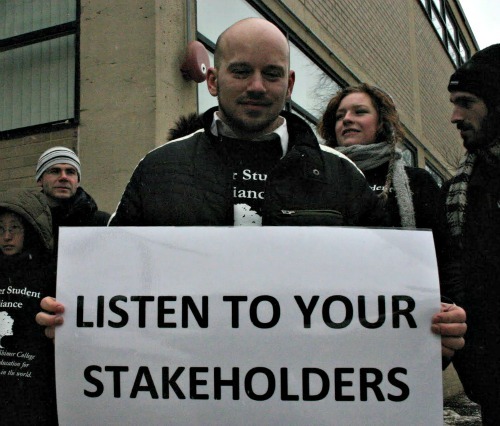Some of the most interesting findings from my fellowship interviews are actually about university stakeholder engagement and networks (or lack thereof), rather than student professional connectedness.
University approaches to external and internal stakeholder engagement are underdeveloped across the sector. Universities are still mostly taking short-term, ad hoc and often transactional approaches to working with our industry and community partners. While some universities do have stakeholder engagement strategies, these are often focussed on research and knowledge transfer, and they aren’t optimised for the mass teaching partnerships we are starting to embark upon.
In my interviews I heard many stories of great attempts to partner with industry for teaching that were thwarted by university systems and processes, or that only worked because they involved ‘guerrilla teaching practice’ outside our systems (you know what I’m talking about), and that may therefore be limited in scale and sustainability.
I heard about the challenges of working productively with partners across multiple organisational areas with multiple contact points and multiple different organisational processes. I heard variously about the risk of one person having all the contacts, the risk of sharing contacts with those who may not treat them sensitively, and the risk of the ubiquitous generic ‘contact us’ email address.
Perhaps most commonly, I heard about how we need to learn to value our partners in building long-term professional relationships for learning and teaching.

Some key questions for educators, program and university leaders in thinking about fostering our connectedness:
– who do we want our key industry and community partners to be, and what are we offering them in the long term? What value do we add?
– how are we valuing partner input in co-creating learning experiences for and with students?
– how can we ‘get out of our own way’, reduce institutional barriers to connectedness and improve engagement?
– who are our key contact points in the university for industry and community engagement? What kinds of resourcing and support do they need?
– how do we join up our engagement strategies and points of contact to improve consistency and quality of engagement?
– How do we manage the risk of engaging external partnerships at scale?
Some questions for educators:
I’m keen to know what your experiences have been with building your program / organisational area’s professional networks.
1. what does your university do well / not do well in supporting the development of your industry contacts and relationships for learning and teaching?
2. what motivations do industry and community partners bring to their partnerships with you, and what types of value does your program / university offer them?
3. how are your intra-university connections? How well connected are you with others within your university that are doing similar work / might have similar partners? How often do you experience the ‘left hand doesn’t know what the right hand is doing’ phenomenon with partners or partnership processes in your unversity? How do you navigate these challenges?
Send me an email if you like, or comment below if you dare… also I encourage those interested to join the GE2.0 community of practice, where there’s more info and discussion about these topics.